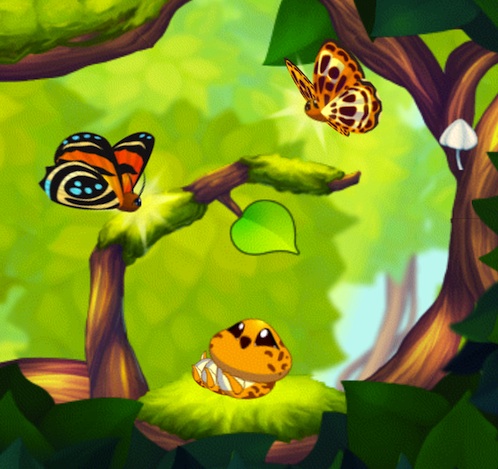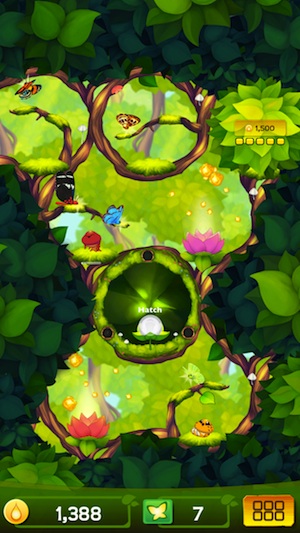Like a certain Nintendo-made franchise, Flutter: Butterfly Sanctuary has players collecting as many creatures as they can over the course of the game. But instead of sending them to fight in highly competitive battles, Flutter adopts a more laid back approach with its focus on feeding and taking care of butterflies throughout their life cycle.
Developed by the New Zealand-based Runaway Play, Flutter originally appeared on Facebook although the company eventually took that version offline late last year. On its blog, director Tim Nixon wrote at the time that Runaway wanted to “address some of [Flutter’s] key issues to ensure that it can become a mainstream success.” Through a partnership with Japan’s DeNA, a mobile social gaming network, Runaway is bringing the improved free-to-play Flutter experience to iOS and Android devices in early 2013.
In the game, you expand your small ecosystem either by attracting more of the colorful insects to your sanctuary with different flowers you find or by raising them after they hatch from their eggs. The goal is to have your butterflies gather as much honeydew (the in-game currency) as they can. You can level the butterflies up and increase the maximum number of honeydew they collect by feeding them pollen from time to time.
You can spend a certain amount of honeydew to open up portions of the forest (pictured right) and make more room for your butterflies. If you’re impatient, you can choose to pay real money for the “Flutterbucks” premium currency, which allows you to buy flowers that guarantee the appearance of a specific butterfly. Alternatively, you can earn Flutterbucks by completing achievement-like tasks and discovering all members of a species.
The handy Flutterpedia helps you keep track of your progress by offering short descriptions and information on the various butterflies in the game, such as where in the world they’re from, how likely you are to find them, and how big they can grow. And with Flutter’s fusion system, you don’t have to worry about having too many of the same species flying around. You can consolidate their numbers by combining two of them into a more powerful butterfly.
While I only had a quick glimpse of Flutter, it was clear that the developer packed a lot of strategy and depth into its unusual game. This attention to detail isn’t surprising when you consider Runaway Play’s lineage: It’s a subsidiary of NHNZ, a company that specializes in producing documentaries for major broadcasters with a focus on natural history.
VentureBeat's mission is to be a digital town square for technical decision-makers to gain knowledge about transformative enterprise technology and transact. Learn More


